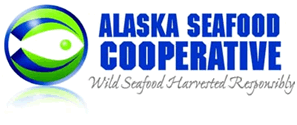SEAFOOD.COM NEWS, April 9, 2013
By John Sackton
At the N. Pacific council meeting this past week, the council approved the industry favored option developed by the Amendment 80 fleet that will increase their flexibility to use quotas.
The Amendment 80 fleet targets flatfish, such as yellowfin sole, rock sole, and flathead sole, but does not have pollock quota.
Under the longstanding practice of the 2 million ton cap, when total allowable catches in the Bering Sea exceed 2 million tons, harvest levels or TAC’s on species such as these three flatfish species are often set below the allowable level.
For example, in 2013, the ABC for yellowfin sole is 206,000 tons, while the TAC is set at 198,000 tons. For rock sole, the tac is 92,380 tons, but the ABC is 214,000 tons. For Flathead sole, the ABC is 67,000 tons, while the TAC is 22,699 tons.
For each of these species, the TAC’s were set lower than would otherwise happen in order to keep total groundfish removals below 2 million metric tons. Pollock and cod TACs in the Bering Sea make up over 1.5 million of the 2 million tons allowed.
In 2012, ice conditions resulted in the Amendment 80 fleet being temporarily unable to fish on yellowfin, and yet they did not have access to other flatfish because the quotas had already been set, and they cannot exceed the quota.
The new flexibility approved by the council this week will create a system to allow Amendment 80 quota holders to exchange unused quota in one of these three species for additional quota in another species, so long as the total removals are within the ABC and 2 million tons catch limit.
This means for example, if a company realized they would not catch 10,000 tons of yellowfin and therefore leave fish in the water that could be sustainably caught, they could apply to NMFS for a trade to take 10,000 tons of rock sole instead, even if they had already met their total quota on rock sole.
The fleet has dramatically reduced bycatch and has been more and more successful at actually catching their quota over the past few years since the fleet has moved to a cooperative quota system. This change will add to their efficiency, and allow for fuller utilization across all flatfish species.
